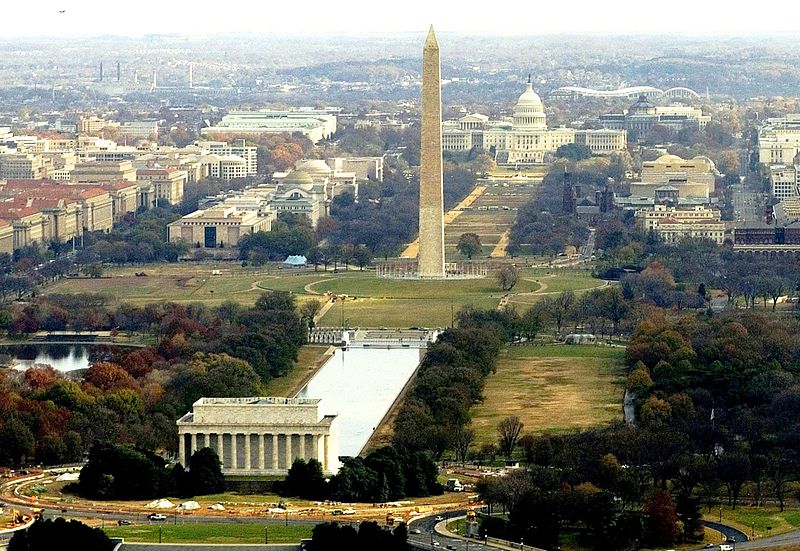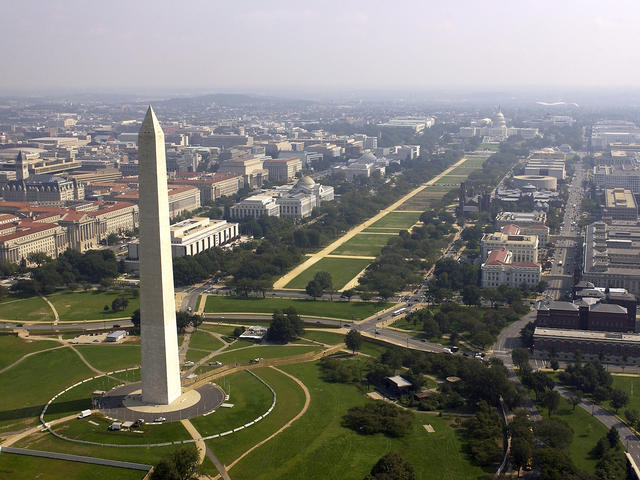Washington, D.C.
Monuments & Memorials in Washington, D.C.:
Probably no city in America has the combined monumental and federal qualities of European cities like Paris, Vienna, or Rome, but Washington, D. C., comes very close; although many cite the precise details incorrectly, there is an absolute limit on building height in our capital city. No structure in the U. S. capital–after the 1890s–could be taller than “the width of the adjacent street plus 20 feet.” So, this law is not about the height of the Washington Monument or the statue on top of the Capitol Building, but it does restrict building heights to make the city more like Paris or those other beautiful, boulevard-crossed, monumental capitals of Europe and South America. That idea is not quite urbanature, but it does prepare the way for a city of wide boulevards, open spaces, and parks that line the Potomac River and surround the many of the most classically-inspired buildings in America.
The National Mall

Once in our federal city, head first to The Mall, a long open-greenspace that connects the Lincoln Memorial, by way of the Washington Monument, to the U. S. Capitol Building, a distance of just about two (2 miles; that is a good hike for even most out-of-shape American fast-food eaters). But the beautiful capital of our country has urbanature aplenty, from DuPont Circle to the Anacostia River, from the Masonic Memorial in Alexandria to Rock Creek Park of he city’s west side. Our Mall includes theSmithsonian’s Castle and its Air & Space Museum, as well as the Museum of Natural History and the National Museum of Art, the Hirschorn Museum and its Sculpture Garden and the Museum of African Art, the new Museum of African-American History and Art, the American History Museum, and the Museum of the American Indian, the Freer Gallery, the Sackler Gallery, the Arts and Industries Building, and finally the Smithsonian International Gallery. Is that enough for your museum sightseeing? Make sure and extend your stay for an day or two longer than you had planned at first. America’s attic–as the Smithsonian is sometimes called thanks to Spencer Fullerton Baird (a professor at my own Dickinson College) who took its collections from to a few thousand objects to many millions of objects–houses as many separate items as any museum collection in the world. The Baird years were when the Smithsonian became America’s greatest museum collection; in fact, the museum still refers to Baird as America’s Sublime Pack-Rat.
